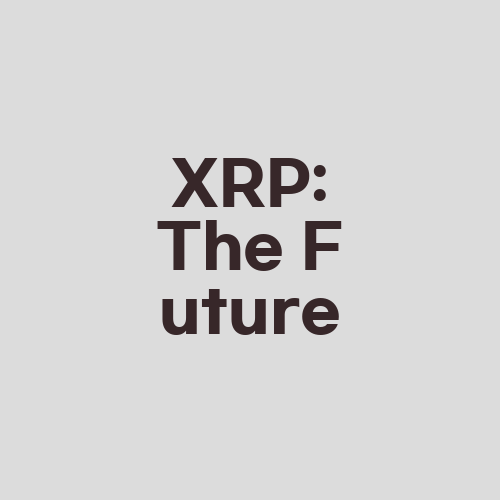XRP: The Future

XRP: The Future of Digital Currency?
What is XRP?
XRP is a digital asset created by Ripple, a San Francisco-based fintech company. XRP is used as a bridge currency for cross-border transactions, allowing banks and financial institutions to settle payments in real-time. Unlike other cryptocurrencies like Bitcoin and Ethereum which use the blockchain technology, XRP uses a unique consensus algorithm called the Ripple Protocol Consensus Algorithm (RPCA). This algorithm allows for faster and more efficient transactions, making XRP a popular choice for financial institutions.
Source: https://ripple.com/xrp/
How does XRP work?
XRP works by using a system of ledgers, also known as the XRP Ledger. This ledger is maintained by a network of independent validators who verify transactions in real-time. The validators use the RPCA algorithm to reach a consensus on the state of the ledger, ensuring that all transactions are validated and processed efficiently.
Source: https://ripple.com/xrp/
What are the advantages of using XRP?
One of the main advantages of using XRP is its speed. XRP transactions are processed in just a few seconds, compared to traditional cross-border transactions which can take several days to settle. XRP is also more cost-effective, as it eliminates the need for intermediaries and reduces transaction fees. Additionally, XRP is secure and decentralized, meaning that it is not controlled by any single entity or government.
Source: https://ripple.com/xrp/
What are some use cases for XRP?
XRP is primarily used for cross-border payments, allowing financial institutions to settle transactions in real-time without the need for intermediaries. However, XRP has other potential use cases, such as micropayments, peer-to-peer transactions, and remittances. XRP can also be used for asset exchange, allowing users to trade cryptocurrencies and fiat currencies without the need for a centralized exchange.
Source: https://ripple.com/xrp/
What does the future of XRP look like?
The future of XRP looks promising, as more financial institutions and banks begin to adopt the technology. Ripple has already partnered with major institutions like Santander and American Express, and more partnerships are likely to follow. Additionally, the increasing demand for faster and more efficient cross-border payments is likely to drive the adoption of XRP in the future.
Source: https://www.investopedia.com/tech/what-ripple/
Conclusion
XRP is a digital asset with a lot of potential. Its unique consensus algorithm and fast transaction times make it an attractive option for financial institutions and banks. While XRP is primarily used for cross-border payments, it has other potential use cases as well. As more financial institutions and banks adopt the technology, the future of XRP looks promising. If you are interested in learning more about XRP and its use cases, be sure to do your research and explore the various resources available online.
Source: https://ripple.com/xrp/